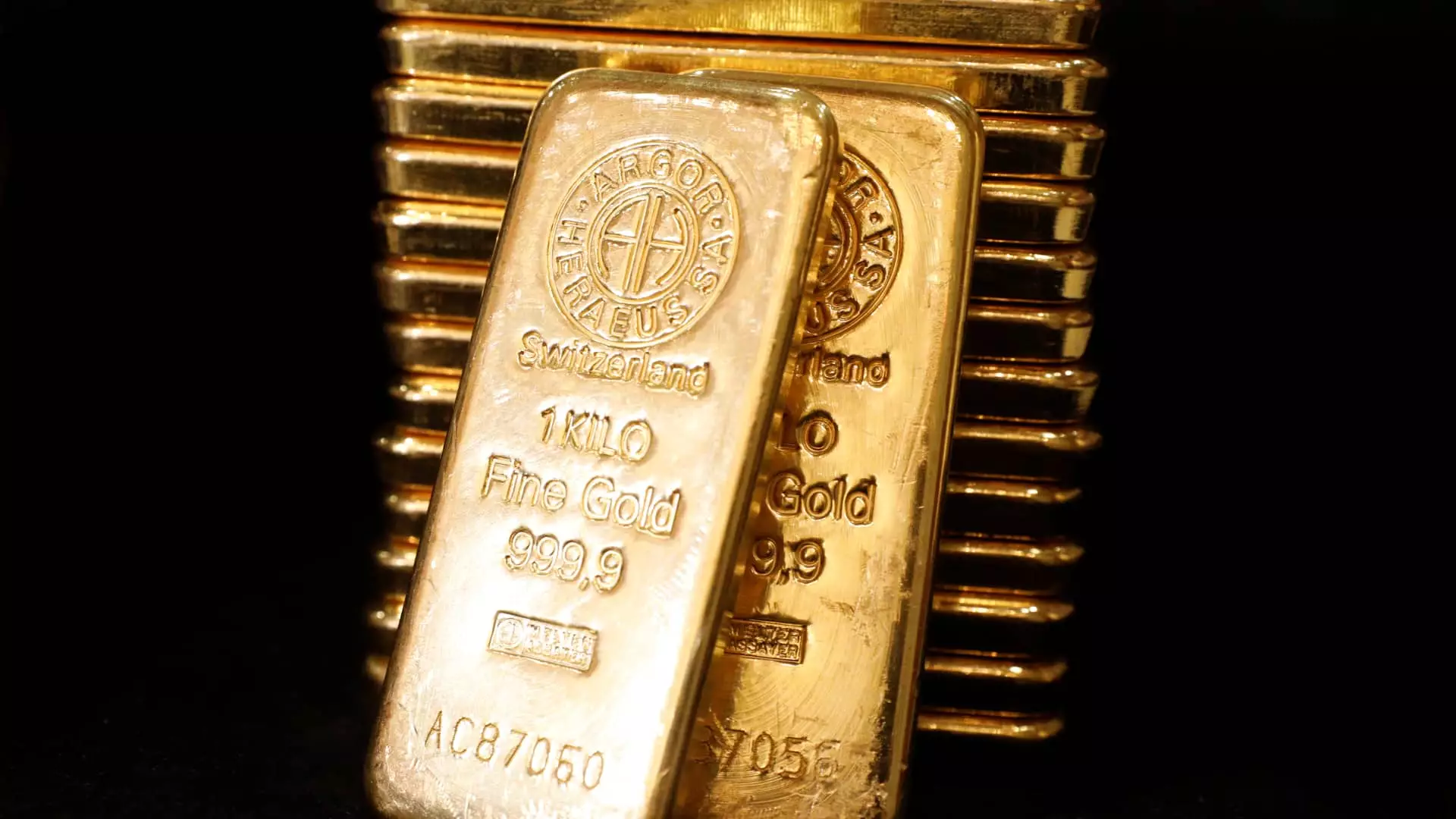The financial world is a tempestuous sea of uncertainty, and amidst chaos, gold shines as a beacon of safety. After a year-long rally that saw gold soar by an impressive 35%, the market has recently tempered that enthusiasm. However, analysts like David Schassler—head of multi-asset solutions at Van Eck—intensely believe that the backdrop remains favorable for gold. The U.S. economy, burdened by exorbitant debt and seemingly reckless spending, is nothing short of a ticking time bomb. Schassler’s assertion that “I couldn’t imagine a better backdrop for gold” resonates deeply in a financial environment rife with challenges and instability.
In a world where political leaders appear paralyzed, largely avoiding any substantive action to address the mounting deficit, gold is poised to benefit. David Einhorn, a prominent hedge fund manager, shares this bleak sentiment, indicating a bipartisan inertia that could lead us to the next financial crisis before any real reform is initiated. If we are barreling toward disaster, perhaps it’s time we reconsider the long-term implications of our investment strategies, focusing on assets with intrinsic value like gold.
The Influential Role of Gold in Investment Strategies
The compelling rationale for investing in gold today isn’t merely about its past performance; it’s about strategic positioning for a turbulent future. Both Schassler and Einhorn suggest that gold could skyrocket to $5,000 an ounce by as early as next year. This bold prediction isn’t just an optimistic forecast; it reflects an urgent need for a financial safety net that gold inherently provides.
Moreover, the conversations around gold have also extended to cryptocurrencies, notably Bitcoin, which is often regarded as gold’s “riskier cousin.” While Bitcoin has experienced significant volatility, its recent surge of around 60% in the last year tells a compelling story. For those intrigued by crypto, investment vehicles like crypto ETFs offer innovative ways to engage with this asset class while mitigating risk. This dual investment approach not only allows for diversification but also capitalizes on a broader financial strategy that includes both traditional and digital assets.
The Promising Intersection of Traditional and Modern Assets
The era of digital assets is upon us, but this digital gold rush underscores the need for caution. The inherent volatility of Bitcoin has made it a speculative investment, fraught with risks that could deter even seasoned investors. However, Todd Rosenbluth from VettaFi has identified promising solutions such as the Calamos Bitcoin 80 Series Structured Alt Protection ETF, catering to a cautious enthusiasm for crypto. Such financial instruments might just be the key that unlocks significant upside while providing a safety net against loss.
The pursuit of hedges against inflation and economic downturns is critical. Traditional means, namely gold, and alternative assets like Bitcoin, may together forge a robust financial strategy. Given the current uncertainty, it’s vital for liberal investors to recognize the need for diversification while aggressively seeking out avenues that promise both protection and growth.
As we navigate this turbulent financial landscape, it becomes increasingly clear that gold is not just an antiquated asset; it remains an essential cornerstone for modern investment strategies. The ever-evolving nature of finance calls on us to stay vigilant and adaptive, ensuring we safeguard our financial futures against the unpredictable tides of uncertainty.

